Best trail mountain bikes – the top-rated trail MTBs you can buy right now
Trail bikes have become the ultimate do-everything MTBs, efficient on the climbs and confident on the descents. Here's our pick of the best bikes available, every one has been fully tested by our expert team
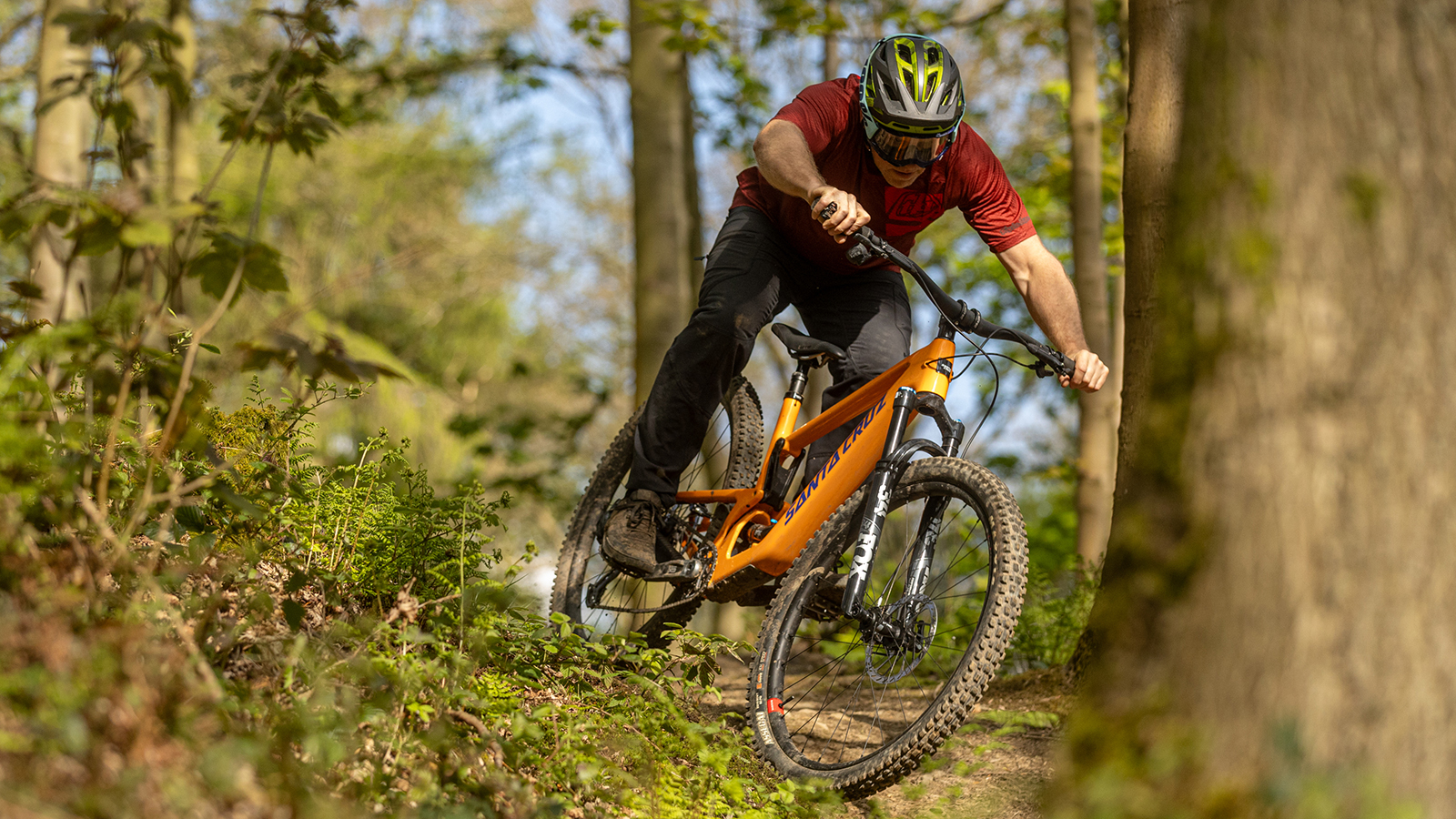
The best trail mountain bikes are designed to be all-around MTBs that can take on any trail, all day long. As trail mountain biking fills the middle ground between enduro and XC, it's the most popular riding style and virtually every brand has at least one trail bike in its range.
Trail bikes are designed to combine uphill and downhill performance. For this reason, they often have a relatively efficient pedaling platform with confidence-inspiring frame geometry for the downhills too. Usually sitting somewhere between 130 and 150mm of front and rear travel, these machines can tackle everything from trail center loops to gnarly off-piste steeps.
With so many quality trail bikes here, it's a very competitive market with lots of top bikes vying for your attention. We've thoroughly tested all the bikes here (plus many others that didn't make this list), and we're 100 percent confident that you cannot go wrong with any of them. The trail MTB that's best for you will depend on where and how you want to ride though, so we've divided our list into various categories which should help steer you in the right direction.
If you're still unsure if trail MTBs are right for you, our guides to the best mountain bikes and best mountain bike brands will help you make your decision. If you're looking to upgrade an existing bike, you may want to have a look at our trail tire guide and our article on the best dropper posts. We've also got a buying advice section on what to look for in a trail bike at the bottom of this article.
The best trail mountain bikes
Why trust BikePerfect
Best trail bike overall
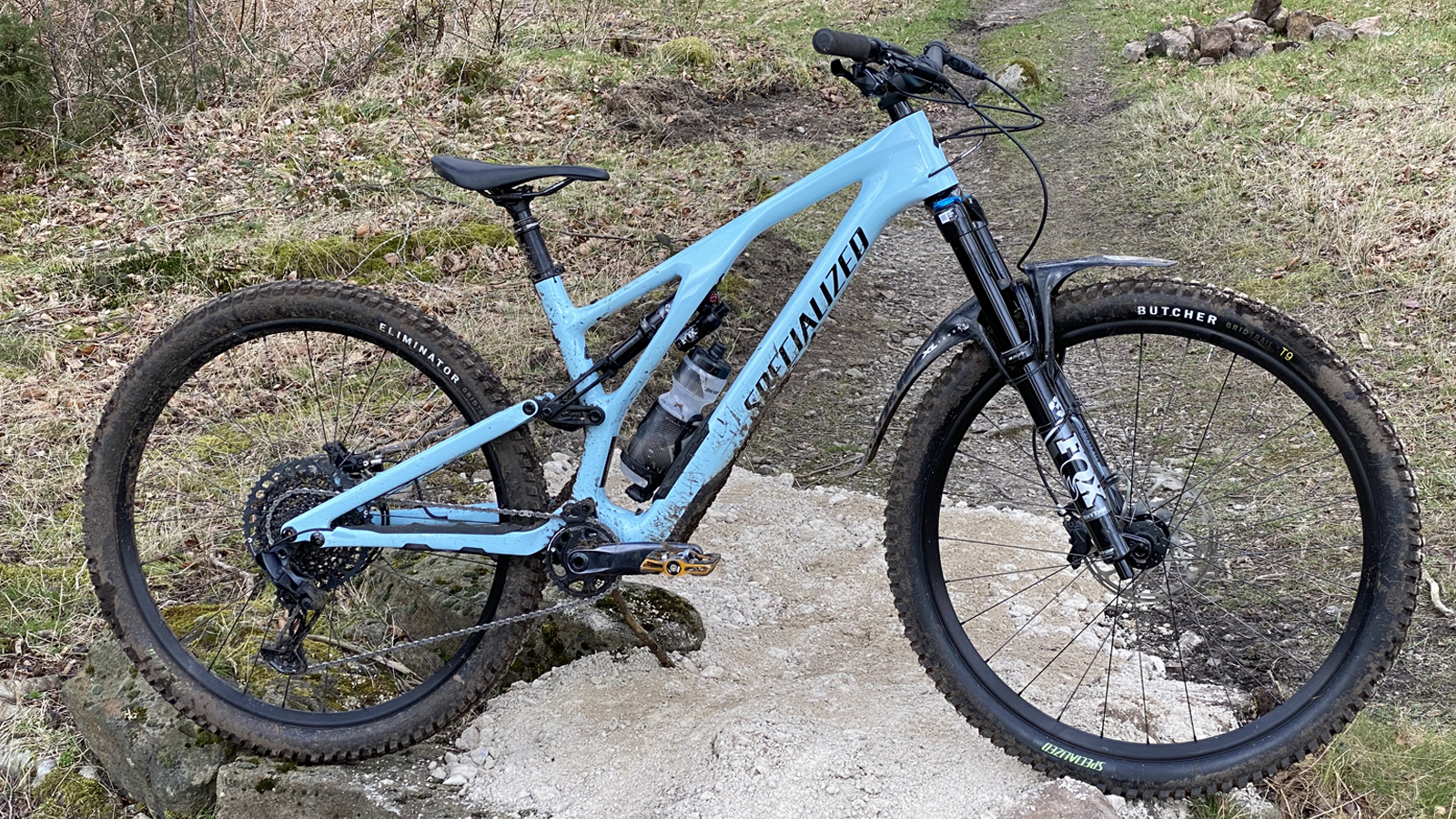
Specifications
Reasons to buy
Reasons to avoid
Specialized offers the Stumpjumper in a huge range of spec, travel options, and in two wheel sizes, however, the Specialized Stumpjumper Evo Comp version is a happy medium between cost and components and is the Goldilocks model for us.
The Evo Comp model is made from the brand's Fact 11 carbon and features 160mm up front and 150mm at the back. The geometry is great, with a really well-centered feel descending and easy poise when climbing. Don't get us wrong, there are bikes out there that climb or descend better, but there aren't many that do both quite so well and it's finding the balance that makes the Stumpjumper such a great bike.
Not only does the Stumpjumper have impeccable ride manners, but Specialized has also packed the Stumpjumper Evo with practical features including a SWAT storage (with hydration reservoir included) and tuneable geometry. It also comes with a full SRAM GX drivetrain, complementary tire combo, and high-control brakes
Reviewer Guy Kesteven said. "It’s light and agile enough to be a joy on less techy, pedaling trails or just big days out in the hills but controlled and calm enough to really push the potential of its radical geometry options. The fact you can play around with big changes to those settings in just a few minutes between runs is a unique and invaluable gift for riders who really like to dig into their dynamics too." Read more in-depth thoughts in our review of the Specialized Stumpjumper Evo Comp.
Best budget trail bike
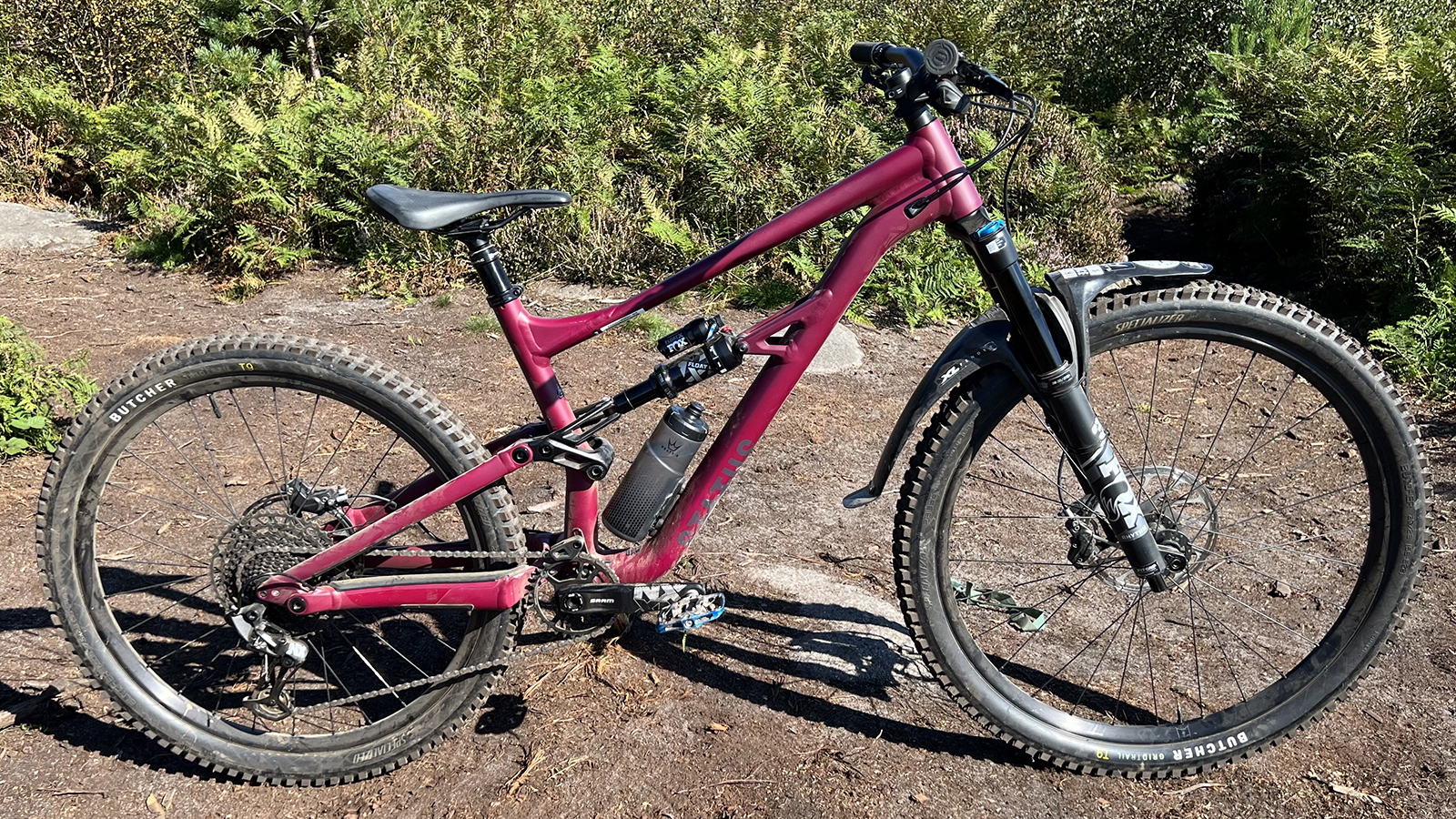
Specifications
Reasons to buy
Reasons to avoid
The Specialized Status 140 proves you don’t need to spend a fortune and have more than six inches of travel to have an absolute blast.
The attack-focused geometry is designed to come in super hard. With the front wheel way out front and the back end tucked as far underneath you as possible, the basic handling dynamic is as close to one of those kids' skid steer chopper trikes as you’ll get. While there’s no shortage of stability or ‘stick it into turns way harder than seems sane’ confidence at the front, the super-short back end also helps you get the nose off the deck surprisingly easily.
The squat back end, with chunky double-sided pivots is properly stiff too, so it’s really easy to exaggerate the natural difference in turning circles and scrub rates of the front and rear wheels and kick or hip it off line like a hero. Even the RX Trail Tune on the shock is pretty tight, so you’re getting more mid-travel support to shove through berms on than typically comfort-focused Specialized FSR bikes. The short stroke fork does really well most of the time too, although more aggressive riders or slam landers will probably want to clip a couple more volume spacers under the air spring top cap to create a more progressive stroke.
It certainly doesn’t smooth out or roll through jank as well as a twin 29er like the Stumpjumper Evo. And, while the steep 76-degree seat angle helps get weight forward over the bars on climbs, the front still wanders all over the place on steep sections and the short back end doesn’t grip as well either. But overall our tester, Guy Kesteven, reported that it is, "one of the most naturally playful, anarchically agile and responsive trail/park bikes I’ve ridden at any price point. If the trails are tight and/or steep with gaps and pops rather than relentless root and rock mess, it’s seriously fast too. Everything from parts pick to stealth aesthetics feels spot on for purpose."
Find out more in our full Specialized Status 140 review.
Best online-only trail bike
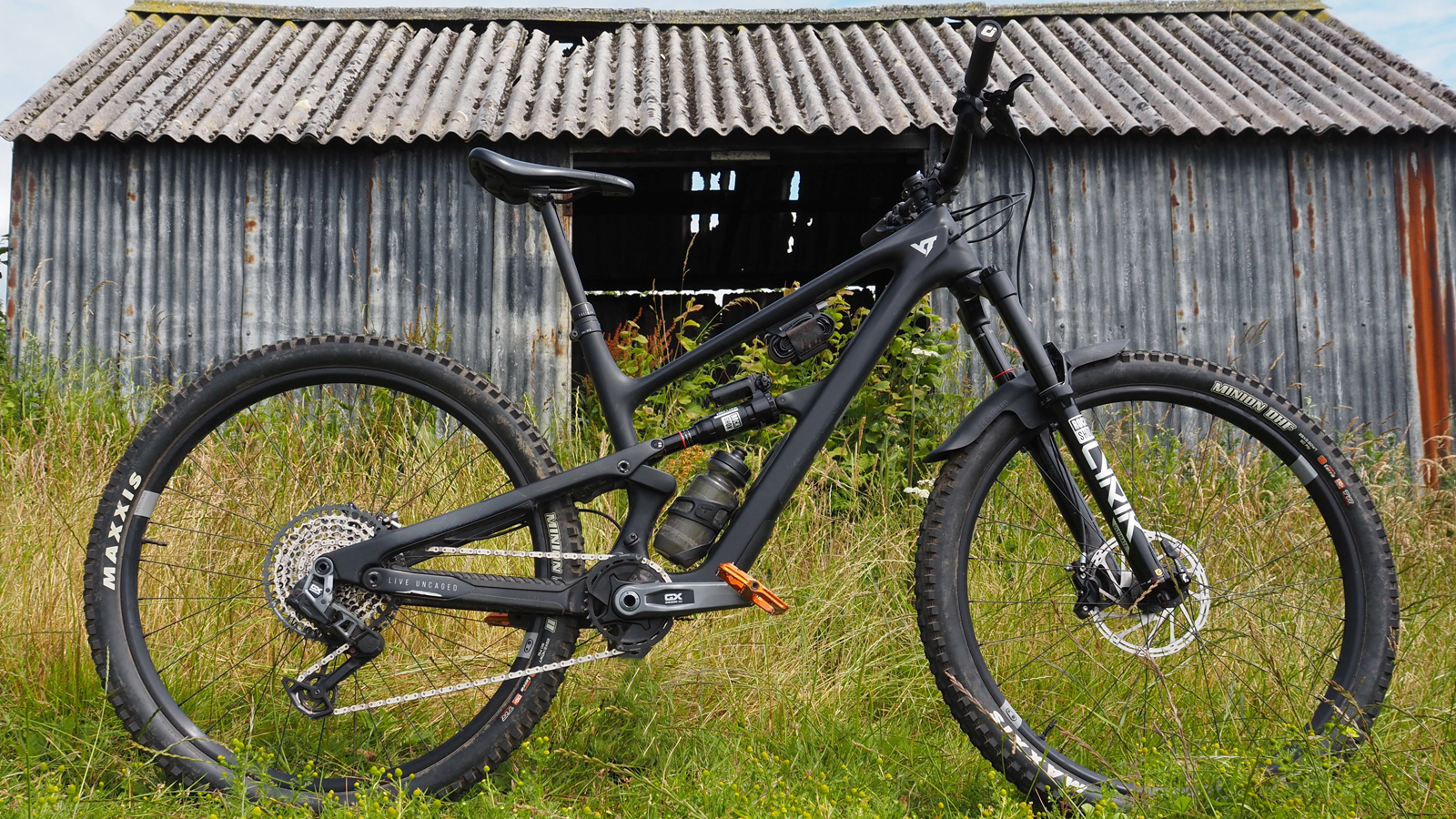
Specifications
Reasons to buy
Reasons to avoid
Direct sales brand, YT Industries, is best known for its gravity bikes, specifically the YT Capra which is a common sight at uplift venues. The Jeffsy is one step below the Capra in the lineup with a trail rather than purely enduro intention.
With 145mm of travel, the Jeffsy still rips on the downhills though and during our testing it has proved itself capable of dabbling with everything from flowing singletrack to enduro trails. The latest version gets a host of frame updates, including a more streamlined design, internal storage in the downtube, a longer reach (495mm on the size large), and more surprisingly, 5mm less rear travel.
For this latest model, YT looked to improve the Jeffsy's pedaling manners for more efficient ascents and the bike definitely feels a more eager climber than its fairly hefty weight would suggest. The designers have also made the shock tune more progressive to prevent bottoming out on big hits. This worked well in testing and we had no issues with an overly harsh suspension being an unintended result. The brand also has its own online suspension setup calculator which is a handy resource.
While the new Jeffsy is a top choice for the vast majority of trails you'll come across, the internal storage opening is not very long and it's a bit fiddly to access its contents as a result. The matte black finish on our test bike scuffed up very easily too, so factor in another $100 / £100 for a full InvisiFrame kit – or go for the gloss finish option. Sizing is smaller than most other brands too, so check the stats on YT's website and consider going for a bigger frame than usual.
For more info, see our YT Jeffsy Core 4 review and we also have a Jeffsy Core 5 first ride.
Best budget online-only trail bike
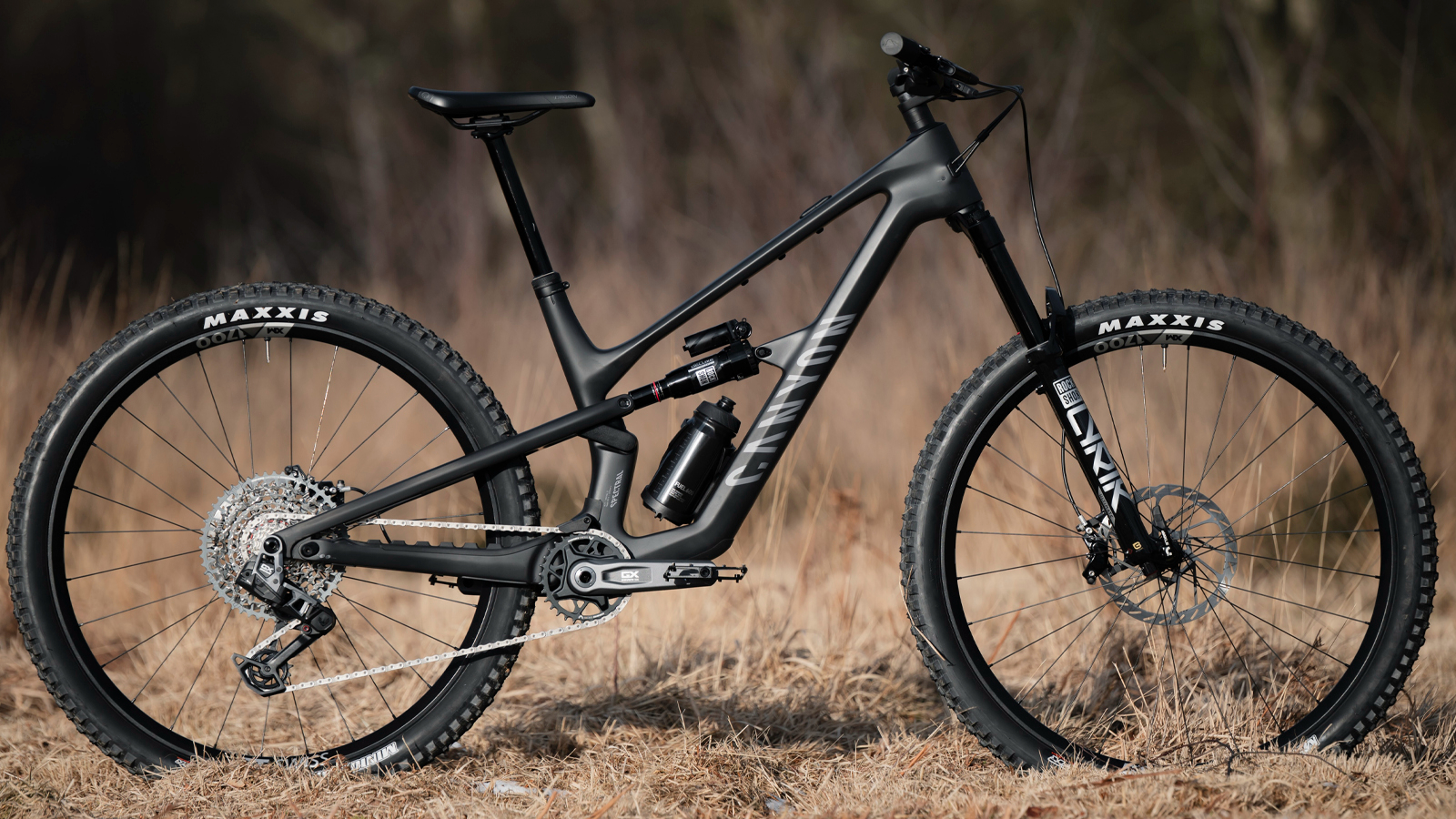
Specifications
Reasons to buy
Reasons to avoid
Canyon's Spectral is a trail bike doing its best enduro impersonation and can continually step up to the job in hand the harder you push. This is down to the properly radical geometry which can teach any trail that normally terrifies us a lesson in Canyon domination.
The latest Spectral doesn’t look that much different to the last version, but it now has internal storage, adjustable steering stabilization, more consistent sizing, a geo altering flip-chip and another adjustment specific to the size of rear wheel (29in or 27.5in) you want to run. Last but not least, it gets a subtly tweaked frame and suspension setup for a poppier and more playful ride.
The CF 7 is the most wallet-friendly version in the Spectral range, but as ever for Canyon, you still get some great kit for the price. Suspension comes from Fox with a 150mm 36 up front. The fork may be the budget-conscious and slightly heavier Rhythm version, but it's still a top performer for this price and works really well with the Performance level Fox Float X shock. Gears and brakes are the excellent Shimano SLX, while the wheels are DT Swiss M1900 shod with Maxxis Minion DHR II 29 x 2.4in MaxxTerra tires front and rear. The front tire gets EXO sidewall protection, while the rear gets the extra security of EXO+.
Guy summed up the latest Spectral. "This entry-level model of Canyon’s evolved all-rounder is a brilliant value, full feature trail MTB with pop and play for endless days." For more on why it's so good, see his 5-star Canyon Spectral CF 7 review.
Best handling trail bike
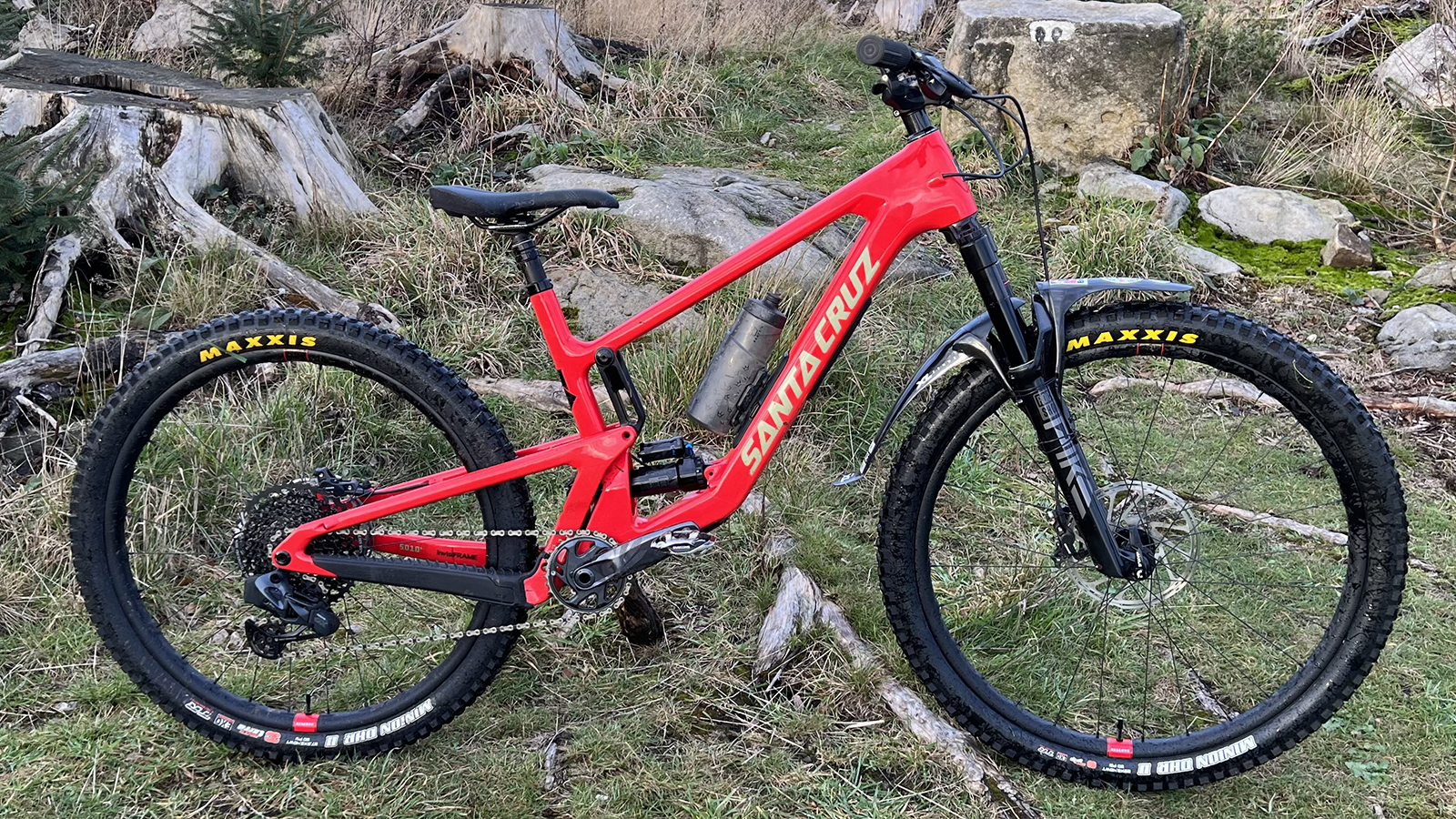
Specifications
Reasons to buy
Reasons to avoid
Santa Cruz has tweaked a great deal for the latest 5010 which is now in its fifth incarnation. With 130mm of rear suspension, the 5010 fits in the travel and use gap between the burlier Santa Cruz Bronson and the sprightlier Tallboy – which also features in this guide.
The new 5010 frame gets a geometry-adjusting flip-chip and Santa Cruz's handy 'Glovebox' internal storage on the downtube. The head angle is 65.2/64.9 degrees (depending on which geo setting you choose) which is ideal for this breed of bike. What hasn't changed is the 5010's rapid and rabid riding character, though the latter has been tempered somewhat from the wilder previous version.
Spec-wise, the build gets a RockShox suspension combo of a 140mm Pike Select+ fork up front and 130mm Super Deluxe Select+ shock. The drivetrain is SRAM's wireless GX AXS, though it's the older version, not the latest T-Type Transmission. Brakes also come from SRAM with 4-piston G2 RS with 200/180mm rotors. Everything runs on the excellent Reserve 3 HD carbon rims on Industry Nine 1/1 hubs shod with Maxxis Minion DHR II triple compound tires, with a MaxxGrip 29 x 2.4in up front and MaxxTerra 27.5 x 2.4in at the rear.
For more on the bike, see the full Santa Cruz 5010 GX AXS RSV review from Guy Kesteven, but here's his verdict: "The new 5010 is a bike that makes you feel like an absolute hero when you point it down your favorite tech trail and let it rip. And that sounds a lot like the definition of 'the best handling trail bike' to me."
Best mid travel trail bike
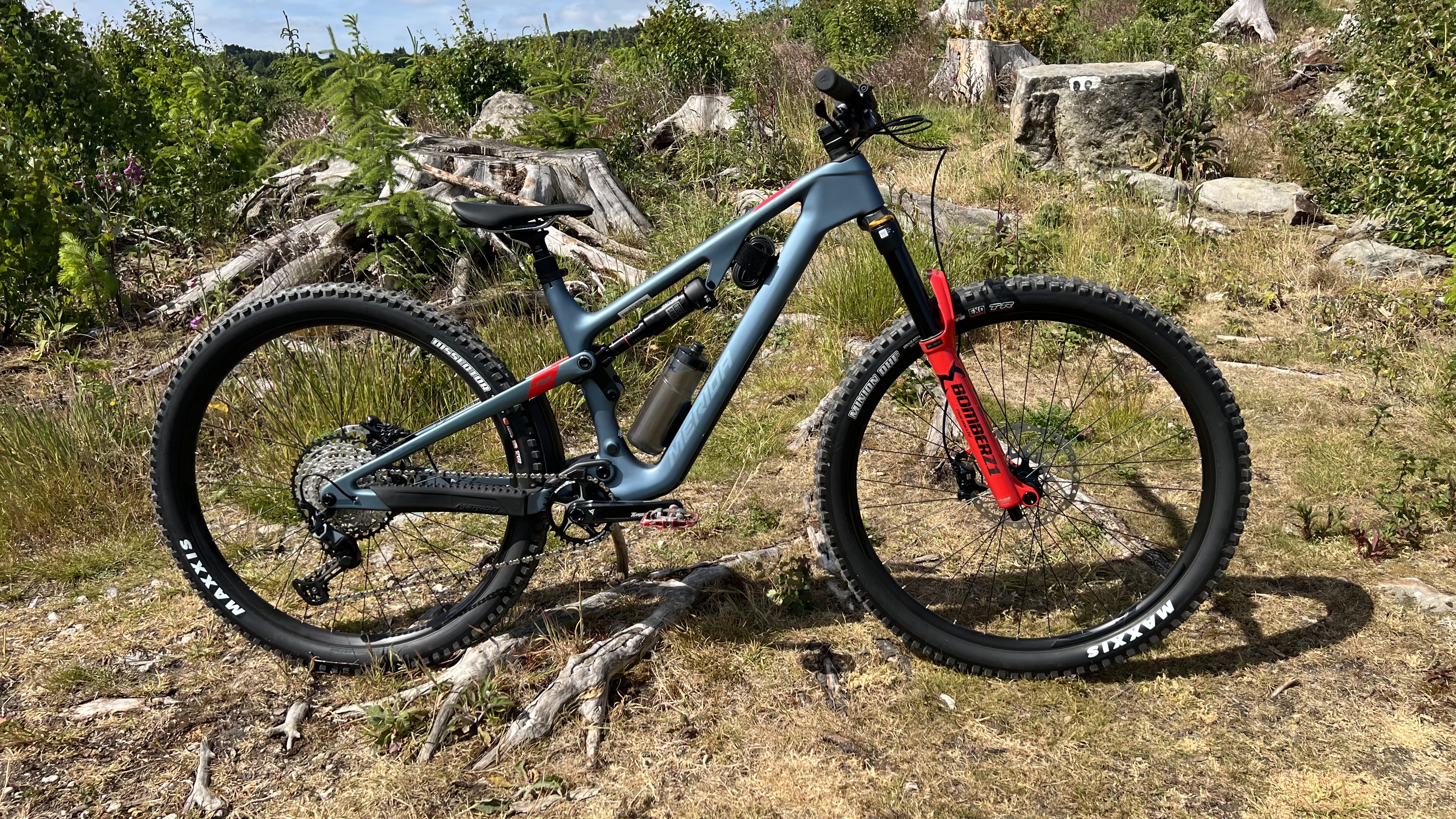
Specifications
Reasons to buy
Reasons to avoid
Our technical editor, Guy Kesteven, seriously rates this shorter travel 140mm travel trail bike that's already picked up a bunch of awards from other testers in the industry too. He's also rave reviewed Merida’s longer travel, higher cost One-Sixty 8000 and reckons it's one of the best enduro mountain bikes available.
Whatever size you opt for, they're all extremely roomy for their size with our Mid test bike measuring 480mm. That gives you plenty of room to maneuver and helps give a planted feel on the trail.
The 150mm Marzocchi Bomber Z1 fork gives a supple front end, but in its default trim, it ramps up at the end of the stroke in a very similar way to the 143mm travel RockShox Deluxe Select+ at the rear, so any ugly landings are tidied up neatly once the shock's damper is dialed in. Flex-stays, rather than pivots, add rear end extra flex too.
A super steep 80-degree seat angle and high level of traction from a naturally ground tracking rear end combines with a mid-length stem and 65-degree head angle combo stops the bike from feeling too floppy when you’re winching the bike upwards. Add an efficient, seated pedaling feel, and you can climb up ridiculously steep, technical upslopes when you’d be walking or wanting an uplift on a lot of bikes. The only big drawback is the One-Forty's weight, which comes in at around 500g more than comparative rivals.
In his full Merida One-Forty 6000 review, Guy summed up the bike as one that "packages radical, hard riding geometry, smooth suspension plus wheel and travel change potential and a lot of neat features with super solid, good value kit. It’s on the hefty side though and the seat angle might not agree with everyone".
For another opinion on the bike, see Bike Perfect Editor, Rich Owen's 12-month test of the Merida One-Forty 6000.
Best short travel trail bike

Specifications
Reasons to buy
Reasons to avoid
Now on its fifth Iteration, the latest Tallboy gets a new frame with longer, slacker geometry (473mm reach on a large), a lower-slung shock (that now moves through the seat tube) and Santa Cruz's 'Glovebox' internal storage. The bike is a peerless example of why you don't need tons of suspension travel to have a riot on the trails. A well-tuned Fox Performance Elite (Fox's second-tier suspension) pairing of a 130mm 34 fork and 120mm rear travel from a Float shock provide enough shock absorption to get you through the majority of trails out there. Though, like our test pilot, you'll likely find yourself needing to ride outside your comfort zone if you're hitting bigger stuff.
Components are almost excellent across the board. Highlights are the Reserve 30 SL carbon w/DT Swiss 370 hubs and wireless SRAM T-Type GX Eagle AXS Transmission. However, during testing, Mick Kirkman, found that despite being of the four-piston variety, the SRAM Level Silver brakes were underpowered for the speeds this bike is capable of.
Mick summed up the bike. "The Tallboy 5 is a bit of a modern classic and one of the fastest and most versatile short travel trail bikes about."
For more, see his full Santa Cruz Tallboy GX AXS RSV review.
Best trail/downcountry bike

Specifications
Reasons to buy
Reasons to avoid
The Norco Optic C2 is well established as a great setup for good time riding so it’s no surprise that this bike feels sorted as soon as you grab hold of the grips. What stood out when we test-rode it is the way the Optic feels absolutely spot-on from geometry to shock tune.
As soon as we started riding, the Optic began offering rich communication between bike and rider. Norco has bumped up the high-speed compression and given the bike plenty of low-speed compression progression which gobbles up stutter bumps, roots rocks, and debris whilst race inspired shock tune will reward warp speed.
Beyond the excellent geometry and chassis dynamics, the component spec is superbly pitched to flatter the feel and capability. It’s practical, well priced and even the cheaper bike still packs all the play essentials into the package if your working with a tighter budget.
Mick Kirkman summed up the latest Optic C2 in his review. "With sublime rear suspension, the Optic is still one of the best downcountry bikes around. Less carbon parts for more dosh and a swap from sorted Schwalbe to vague Vittoria tires mean the kit list isn’t as good value as previously, but the Optic C2’s spirit still shines through."
Get full details of the Norco Optic C2 in our review.
Best lightweight trail bike
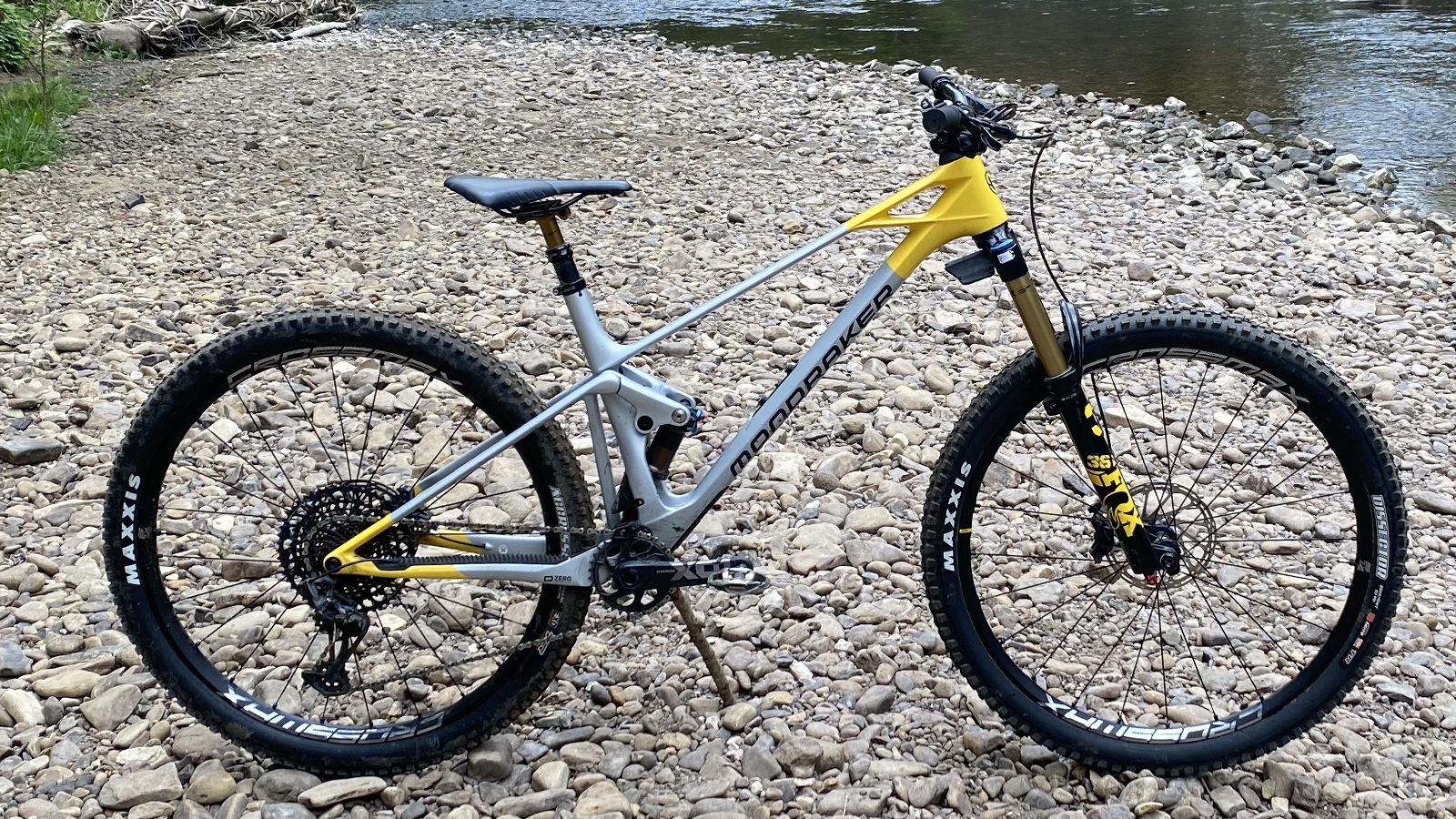
Specifications
Reasons to buy
Reasons to avoid
Mondraker’s Raze is a lightweight mid-travel trail steed with a 150mm travel fork, 130mm shock, and Mondraker’s sleek aesthetic. The RR version gets full Fox Factory suspension monitored by its unique MIND telemetry system.
With a lightweight frame, a slightly compliant, conforming – rather than rigidly harsh – feel and the Raze Carbon RR feels inspiringly alive and responsive on the trail, never rabid or rowdy.
The MIND system gathers suspension and ride data and sends it to a smartphone app. This allows you to study how your suspension performed over a ride and tune it accordingly. You also get detailed telemetry on your performance which you can properly geek out on – if that's your thing.
In his review, Guy remarked, "Despite so many bikes following much of Mondraker's pioneering geometry lead, it has managed to keep its signature ride character deliciously distinctive. The light, lithe, perfectly imbalanced suspension of the Raze RR makes it a proper ‘chef’s special’ in terms of accentuating that agility and inherent ‘skill gifting’ to the maximum." For more info on this tech-packed bike, check out our full Mondraker Raze Carbon RR review.
Best hardtail trail bike

Specifications
Reasons to buy
Reasons to avoid
A hardtail in best trail bike? Surely some mistake, but no. The Santa Cruz Chameleon is here very much on merit, as this eighth edition of Santa Cruz's trail-friendly hardtail is the most versatile, confident and flat-out-fun incarnation yet. It's also the most engaging and easiest-on-the-wallet entry into owning one of this premium brand's bikes.
Despite the finishing kit being a tad below par to that found on comparably priced bikes, the forgiving yet massively capable ride is so much fun that it won't ever cross your mind.
It can run both MX (mullet) or full 29er configurations which we found gave it a delightful double personality. "In MX format it’s got proper pop, precision, and powerful responsiveness for attacking the most fun trails flat out or you can choose the 29er option for the smoothest ride and tap out the tempo as far into the hills as your curiosity takes you." For our full verdict, check out our Santa Cruz Chameleon review.
Best high pivot trail bike
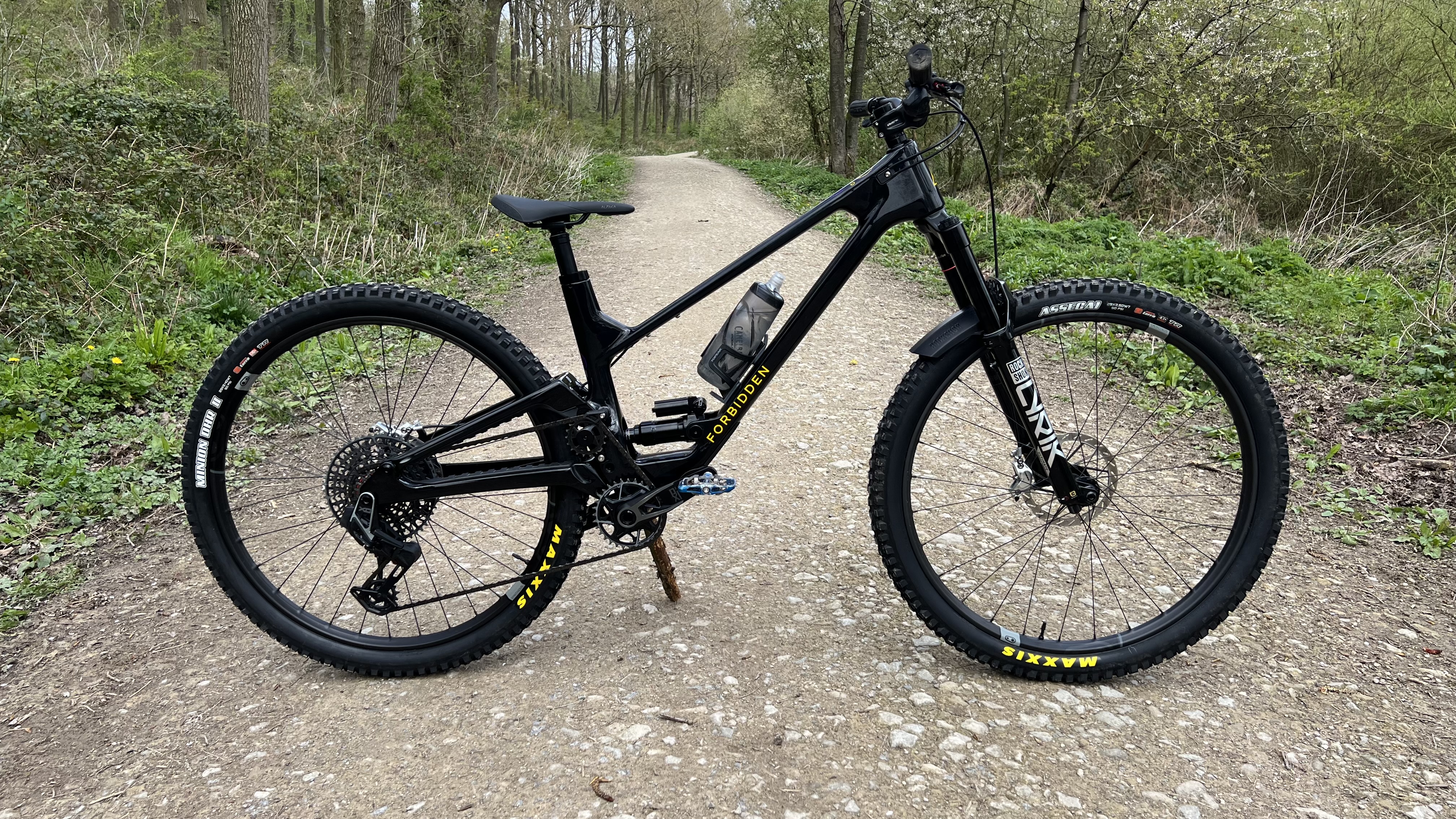
Specifications
Reasons to buy
Reasons to avoid
While high-pivot bikes using idlers are becoming increasingly popular on downhill bikes and enduro bikes, they haven't really filtered down to the best trail bike market that much yet. Idler-equipped bikes have the advantage that the suspension and drivetrain are more disconnected giving better suspension performance, however, this can come at the cost of pedaling efficiency.
The Forbidden Druid V2's drivetrain creates less drag than it's predecessor and gives better chain security. Forbidden have also enhanced the Druid's riding character and the new incarnation combines short travel, agility and responsiveness with long travel control and confidence for a best of both worlds feel.
In testing, our tech editor, Guy, reported that the Druid V2 "charges, pops and hustles like a hard pedaling short travel bike but carries speed through jank and jolt sections like some kind of catapult. When that generates more speed than you’re expecting (which will happen a lot at first) it’ll save your stupid ass/arse and throw you straight back into the ring on your toes and ready to go. It does it without any of the old stretchy weirdness either, so not only is the overall performance better it’s easier to go harder on sooner.
Reviewer Guy Kesteven summed up the Druid V2. "With up to date, suspension flattering geometry, less drag, internal storage, smarter servicing touches and a killer spec right down to the correct tire carcasses at each end mean the Druid is truly something special. In fact, when I’m increasingly saying test bikes are sorted, capable and forgiving but in many ways increasingly similar, the Forbidden has got just enough freak to make it one of the bikes I’ve enjoyed riding most and been gutted to hand back in years."
For more, see our full Forbidden Druid V2 XO review.
Also consider
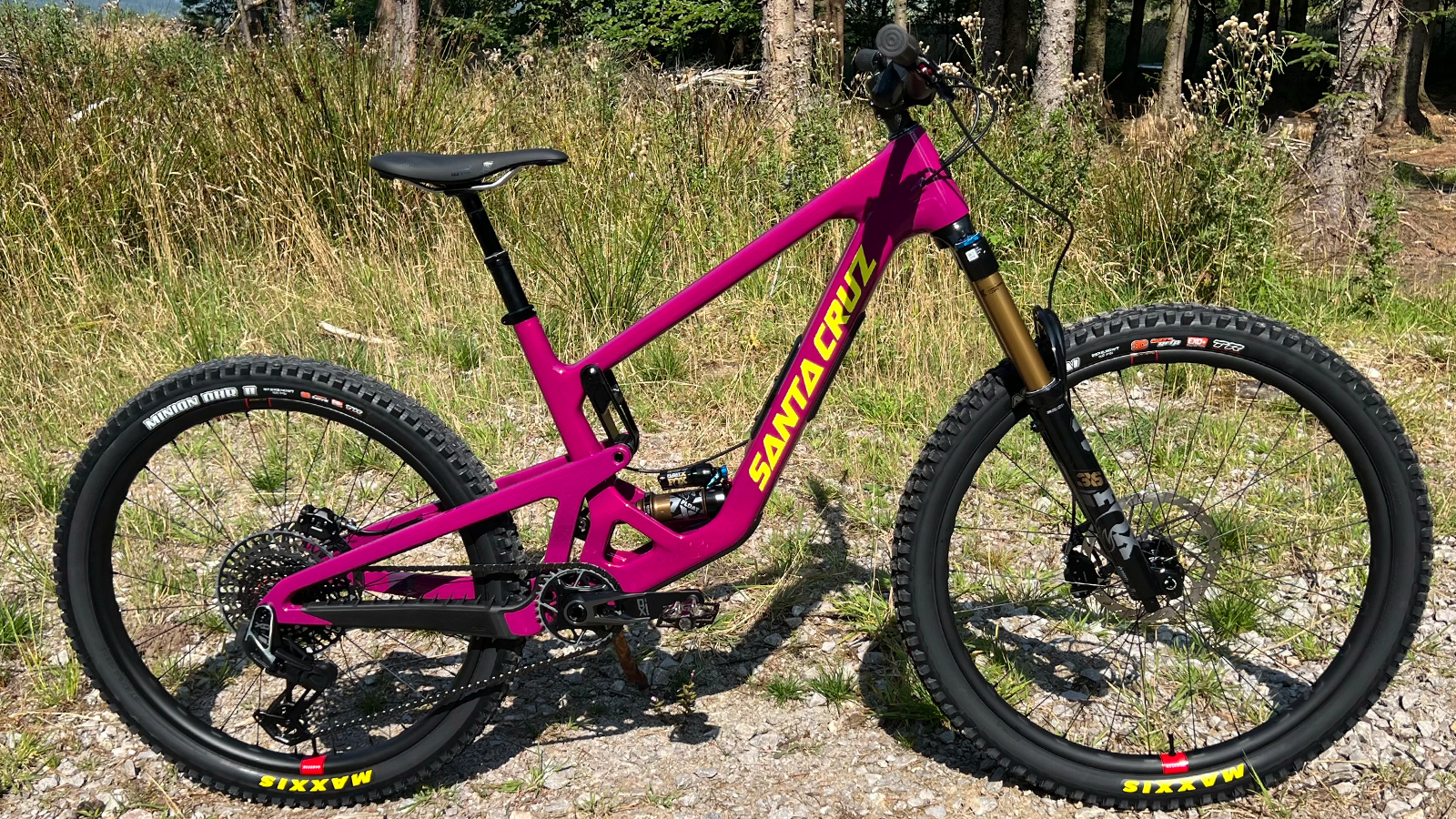
Specifications
Reasons to buy
Reasons to avoid
Over the years the Santa Cruz Bronson has built a reputation for being a super fun, agile riding, mid-travel trail bike. This latest fifth-generation version has a more controlled suspension platform though, which means it's more planted than playful.
The Bronson 5 frame follows the same Santa Cruz trail bike layout of the past two generations, but the belly of the downtube is now troughed out rather than being a box section. This allows the shock to be given a lower and flatter position, however, it also results in reduced internal storage space in front of the bottom bracket.
Geometry-wise, the new frame has a half-degree slacker 63.9-degree head angle in the low suspension setting, a much steeper 77.9-degree seat angle, and a 6mm longer 478mm top tube (size large) to compensate.
The XO AXS RSV model we tested is the top-end version and comes with a Factory-spec Fox suspension combo of a 36 fork (with the latest GRIP X2 damper) and Float X2 shock, wireless SRAM XO1 Eagle Transmission gears, Maven brakes and carbon Reserve wheels.
Our tester, Guy Kesteven, summed up the new Bronson: "Santa Cruz’s move towards four bar suspension manners and gravity geometry makes it more stable, controlled, and safer in steeper situations, but reduces its signature playful pop and adds significant weight."
For more, see our full Santa Cruz Bronson XO AXS RSV review.
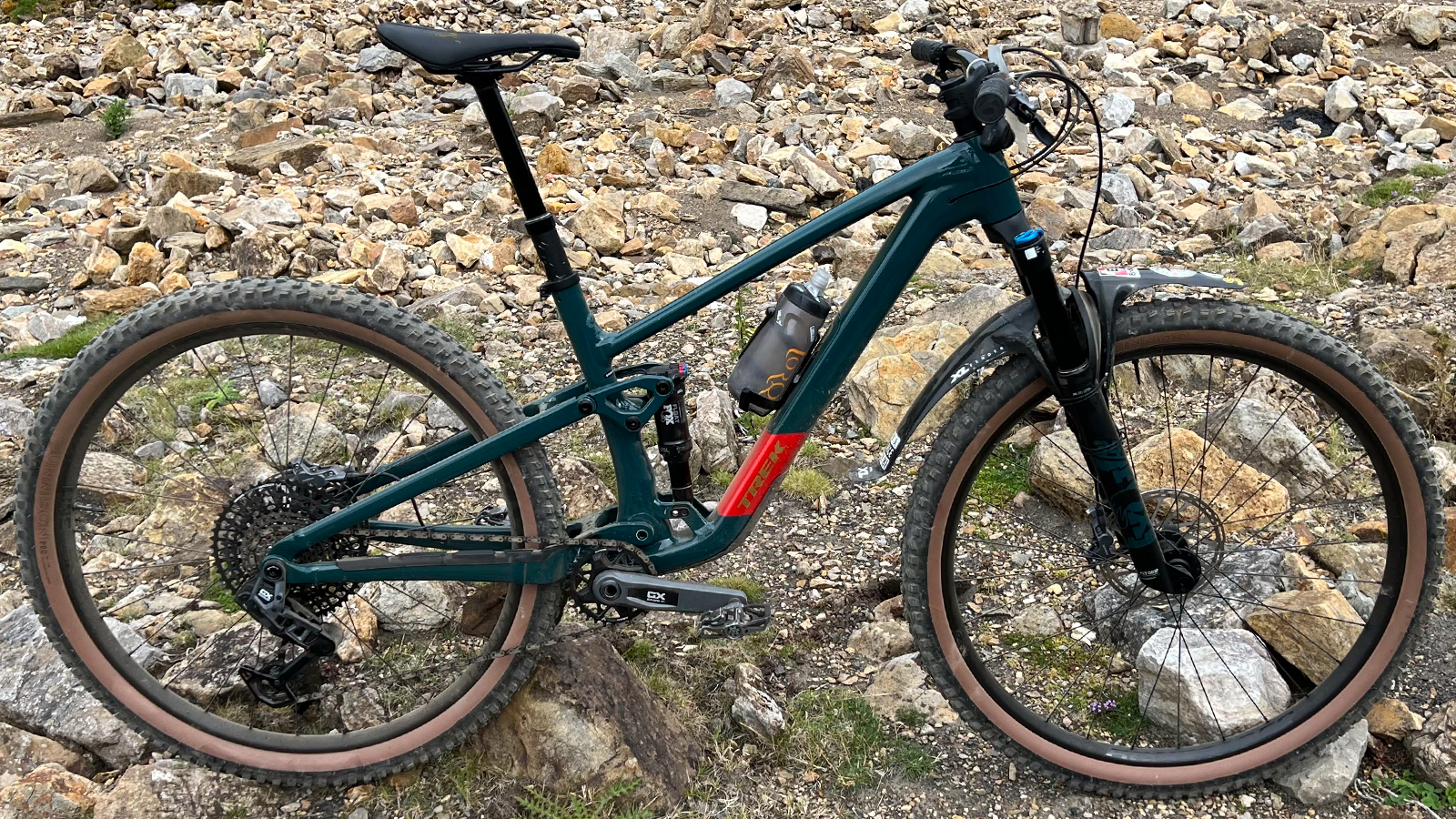
Specifications
Reasons to buy
Reasons to avoid
Over various iterations, the Trek Top Fuel has morphed from an XC race bike to a short travel trail charger. This latest fourth generation, aluminum framed version is 150 to 200g lighter (depending on frame size) than the last incarnation and has improved geometry too.
A flip-chip lets you adjust key angles such as the head tube, which is now 65.5 or 65.9 degrees depending on the setting you choose, and the seat tube angle is now 76.2 or 76.6 degrees. The adjustable geometry also means you could officially run a 27.5in rear wheel if you wanted to 'mullet-ize' the bike too. The size S comes with 27.5in wheels, but all other sizes come with twin 29in as standard.
Speaking of sizes, Trek has introduced an additional M/L option which is a handy addition for the many riders who fall between medium and large frames.
The Top Fuel runs a 140mm Fox Rhythm 34 fork with its GRIP damper, that's paired with a Fox Performance Float DPS shock with 120mm travel. Our tester, Guy Kesteven, did some fettling to improve the rear shock but the more basic fork can't be improved similarly. Also, the SRAM Level Bronze 4-piston brakes are adequate rather than high performance.
Guy summed up the Top Fuel 9: "Trek’s latest Top Fuel is a brilliantly balanced, super capable short-travel trail bike for all-day entertainment. However, it’s relatively expensive and comparatively heavy, the brakes and fork are pretty basic too."
For deeper info, see our full Trek Top Fuel 9 Gen 4 review.
How to choose the best trail bike for you
With literally hundreds of different trail bikes out there, choosing the right one for you can be a daunting task for the inexperienced. Our test team has tested the vast majority of those bikes though, so here are a few key things we'd suggest you consider when making your choice...
- Suspension travel: Trail bikes cover a wide range of suspension setups, ranging from 120mm of rear travel at its shortest, to around 150mm at its longest, while fork travel tends to be 10mm more than the rear. If you tend to ride less threatening singletrack type trails then opt for shorter travel, but if you ride more enduro-like tracks with bigger features, longer travel is a better option.
- Wheel sizes: All the bikes here either come with twin 29-inch wheels or a 29-inch front and 27.5-inch rear (known as a mullet setup), and some bikes are adjustable to take either rear wheel size. Twin 29in wheels are most efficient at covering ground and rolling over obstacles, but mullet bikes tend to be more agile and playful.
- Online-only vs shop sales: As a general rule, with lower margins than bricks and mortar shops, bikes sold from direct sales manufacturers such as Canyon and YT are better value than their rivals. However, you're unable to try (or at least straddle) before you buy and you also run the risk of more complicated issues should you need to return the bike for any reason. It's well worth keeping all that in mind when making your decision.
- Weight: With longer, beefier suspension and frame reinforcements for internal storage, 14 to 15kg (31 to 33lbs) is now the norm for mid-travel trail bikes. Cheaper bikes tend to be heavier with weightier components too. Heavier bikes are of course more of an effort to pedal uphill, but you can lighten loads with upgrades such as lighter wheels and perhaps tires later down the line.
Frequently asked questions
What's the best trail bike geometry?
Mountain bikes have been getting longer and lower as time has progressed. With wheel and suspension technology continually improving and brands embracing new fork offsets, trail bikes are becoming ever more capable.
Expect to see head angles between 64- and 66-degrees and seat angles between 74- and 75-degrees. With such a range of geometry figures, one trail bike could ride very differently from another, so if you are unsure what would suit you, many shops or retailers offer test rides or demo days so that you can try before you buy.
How much suspension travel should a trail bike have?
Only a few years ago, travel was a bike-defining characteristic, but that's no longer the case. We're seeing cross-country bikes with over 100mm of travel, trail bikes pushing up against 160mm of squish, and enduro bikes that bottom out at 150mm.
Trail bikes can range from 120mm of travel all the way up to about 150mm, and quite often we see forks that are about 10mm longer than rear shocks. Added travel at the front gives a bike a bit more composure on the downhills, while a shorter stroke at the rear makes it easier for designers to keep the chainstays compact leading to a lively feel on the trail.
While hardtail trail bikes are becoming less common, there are still a few around. The simplicity of the frame keeps the price down, and expect to find a 130-150mm fork and 29-inch or 27.5+ wheels and tires. If you are interested in that option, check out our best hardtail mountain bike guide.
Should I got for 29 or 27.5-inch wheels?
Over the years, the wheel size debate has been hotly contested. Trail bikes take advantage of both wheel sizes, and historically if you wanted an agile and maneuverable ride, 27.5 was your ticket, while if you were looking for rollover and speed, you'd want a 29er. However, as things have progressed, brands seem to be embracing the larger wheel size.
Because a 27.5-inch wheel with a 2.8-inch tire is roughly the same diameter as a 29er with 2.3-inch rubber, quite a lot of frames designed for bigger wheels will be compatible with both.
And if you want the best of both worlds, lots of bikes are available as a mixed-wheel mullet option, with a 29in upfront and a 27.5in wheel on the rear.
Should a trail mountain bike have an alloy or carbon frame?
Alloy frames are cheaper to produce, so it's no surprise to find them at the lower end of the pricing spectrum, while carbon dominates the upper end. There are great bikes in both materials, and ultimately your budget will determine what your new bike is made from. Some brands offer an alloy version of a frame specced with top-end components for a fraction of the cost of the carbon frame with the same build. If you are planning on upgrading parts over time go for the carbon version, if you are looking for the best performance-to-cost ratio then an alloy frame is probably the way to go.
What components should I look for?
For the most part, if you are choosing an XC bike, you will choose lightweight XC parts, and if you are going enduro, you will go full enduro. Trail bikes are a little different and really blur the lines between disciplines. Much of the component choice will be dependent on your local trails and riding style.
If you're looking to try out the odd bit of enduro riding, there is no harm in beefing up components like wheels, tires, or brakes to handle the extra stresses. However, if your trails are tamer or if cruising and flow are more your style, choosing lighter-weight parts would be a good way to go.
How much should I spend on a trail MTB?
While you can get worthy, well-made trail bikes with reliable components starting at around $2,000 / £2,000, the sweet spot is around $3,000 / £3,000 to $5,000 / £5,000.
By spending more in this bracket you'll get improved components with less cost-cutting on the likes of wheels, tires and drivetrain parts – combining a cheaper chain and cassette with a fancier mech and shifter is a common cost compromise that brands hope will go unnoticed.
While of course you can spend much more than that and you'll start to see wireless components such as shifters, dropper posts and suspension, the law of diminishing returns will start to apply too.
How we test trail bikes
Given that most trail bikes are designed for a fairly wide range of conditions that is exactly what we test them in – everything from fun trail center loops to gnarly, natural off-piste descents and everything in between. We also like to push the bikes beyond their designed use to see how they perform – as that is what you may end up doing out in the real world.
While this is somewhat dependent on the season, we also aim to ride the bikes as many different riding conditions as possible to see how they perform in sucky mud and over slippery roots as well as on dusty, fast-running hardpack. This also helps to give us an understanding of how the bikes will stand up to hard use and if it will still function if parts of it are clogged up with mud or affected by other trail debris.
Meet the testers

Guy's been testing and writing about mountain bikes since the '90s, he’s written several million words about several thousand test bikes and a ridiculous amount of riding gear. We are willing to bet that there aren't many trail bikes Guy hasn't tested over the last couple of decades.

Rich has been riding mountain bikes since the early nineties and professionally testing bikes and kit for over a decade. While he has ridden mountain bikes of every kind, Rich is a trail bike rider at heart and loves finding flow on more technical lines.

An ex-elite downhill racer, Mick's been mucking about and occasionally racing mountain bikes for over twenty years. Nowadays, he's mostly riding enduro-style terrain on conventional and electric bikes.

Rich Owen joined the BikePerfect team as editor in 2021. He's worked as a journalist and editor for over 24 years, with 12 years specializing in cycling media. Rich bought his first mountain bike (a rigid Scott Tampico) in 1995 and has been riding MTB for almost 30 years.
Current rides: Merida One-Forty 6000, Banshee Paradox, YT Jeffsy Core 3, Saracen Ariel 30 Pro
Height: 175cm
Weight: 69kg
- Guy KestevenTechnical-Editor-at-Large
- Colin LevitchFreelance writer
- Mick KirkmanFreelance writer
